JUDY GARLAND
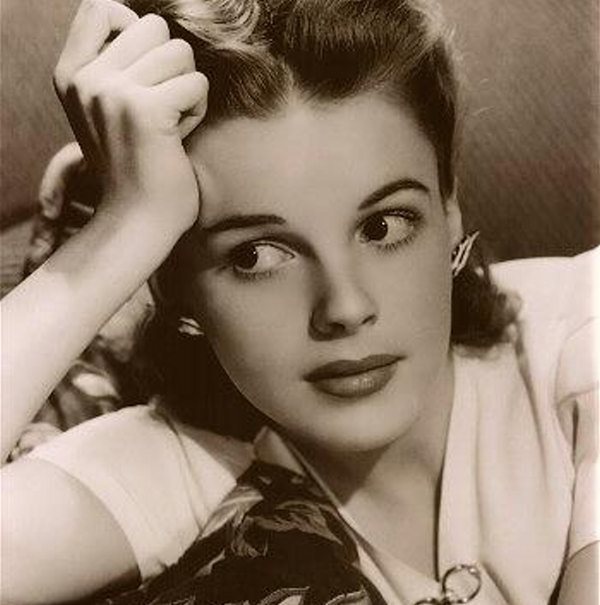
Releases
 1956, Judy Garland
1956, Judy Garland Gene Kelly’s Centenary, Gene Kelly
Gene Kelly’s Centenary, Gene Kelly Judy Garland, Judy Garland
Judy Garland, Judy Garland Till the Clouds Roll By (O.S.T - 1946)
Till the Clouds Roll By (O.S.T - 1946) El Pirata (O.S.T - 1948)
El Pirata (O.S.T - 1948) The Wizard of Oz (O.S.T - 1939)
The Wizard of Oz (O.S.T - 1939) For Me and My Gal (O.S.T - 1942)
For Me and My Gal (O.S.T - 1942) Thousands Cheer (O.S.T - 1943)
Thousands Cheer (O.S.T - 1943) The Harvey Girls (O.S.T - 1946)
The Harvey Girls (O.S.T - 1946) Easter Parade (O.S.T - 1948)
Easter Parade (O.S.T - 1948) Little Nellie Kelly (O.S.T - 1940)
Little Nellie Kelly (O.S.T - 1940) Meet Me in St. Louis (O.S.T - 1944)
Meet Me in St. Louis (O.S.T - 1944) In the Good Old Summertime (O.S.T - 1949)
In the Good Old Summertime (O.S.T - 1949) Original Soundtracks Hollywood 40's
Original Soundtracks Hollywood 40's Vintage Hollywood
Vintage Hollywood Born In A Trunk, Judy Garland
Born In A Trunk, Judy Garland 100 Vintage Love Songs
100 Vintage Love Songs Words and Music (O.S.T - 1948)
Words and Music (O.S.T - 1948) Ziegfeld Girls (O.S.T - 1941), Varios Artistas
Ziegfeld Girls (O.S.T - 1941), Varios Artistas 100 Songs for Romantic Dinner
100 Songs for Romantic Dinner Babes On Broadway (O.S.T - 1941)
Babes On Broadway (O.S.T - 1941) Songs For Vintage Lovers
Songs For Vintage Lovers 100 Original Soundtracks, Hollywood Vol. 1
100 Original Soundtracks, Hollywood Vol. 1 100 Original Soundtracks, Hollywood Vol. 2
100 Original Soundtracks, Hollywood Vol. 2 50 Radio Hits of the 50's
50 Radio Hits of the 50's Las Edades de la Navidad, The Christmas Ages
Las Edades de la Navidad, The Christmas Ages 50 Soundtracks Movies of 50'
50 Soundtracks Movies of 50'
Videos
Biography
In 1935 the head of MGM (Metro-Goldwyn-Mayer) was induced to hear her sing. Enthused, he signed her to a contract. There was some uncertainty at the studio on how to utilize her talents. A year passed before she made her first MGM film, a two reeler. Her first appearance in a feature did not come until 1937, when she was loaned to Twentieth Century-Fox. That same year at an MGM party for its star Clark Gable she was a hit singing a specialty number, “Dear Mr. Gable” adapted from the well-known standard “You Made Me Love You.” As a result she and the song were incorporated into the 1937 feature Broadway Melody of 1938. Again she earned accolades.
MGM quickly put Judy Garland into more films, each spotlighting her in song. In her next film – Thoroughbreds Don’t Cry (1937) – she was cast with Mickey Rooney, with whom she subsequently appeared in eight films. MGM paired them in some of the Andy Hardy films, a series starring Rooney as an “average” American teenager. The duo was also winning in movies of the “c’mon kids, let’s put on a show” type, including Babes in Arms (1939), Strike Up The Band (1940), Babes on Broadway (1941), and Girl Crazy (1943). Her most memorable film role (and the one which catapulted her to stardom) came in 1939 with The Wizard of Oz. She won a special Oscar as “best juvenile performer of the year.” The film also provided her with the song (“Over the Rainbow”) with which she was identified until her death.
During the 1940s she graced a number of outstanding musicals, including Meet Me in St. Louis (1944), The Harvey Girls (1946), and Easter Parade (1948). She was superb in a non-singing role in The Clock, a sentimental drama about a young girl and a serviceman on leave.
Once an admirable trouper, she became during the 1940s a problem artist. The filming of In the Good Old Summertime (1949) was repeatedly delayed, as was Summer Stock (1950). A pattern had been set which would increasingly debilitate her. She was replaced in a number of films and finally was fired by MGM in 1950.
Sidney Luft, a dynamic promoter who later became her third husband (1952), started Garland on a career on concert stages. She was a smashing success at the Palladium in London, at the Palace Theatre in New York City, and elsewhere. The magnificent film A Star Is Born (1954) capped her comeback, and she earned an Oscar nomination. But faltering health, increasing drug dependency, and alcohol abuse led to nervous breakdowns, suicide attempts, and recurrent breakups with Luft, by whom she had two children, Lorna (1952) and Joseph (1955). The Lufts finally divorced (1965) after years of legal wrangling.
Notwithstanding her troubles, Judy Garland undertook a highly successful concert tour in 1961, which was capped by an enthusiastically received concert at Carnegie Hall: the live recording of that event sold over two million copies. That same year she won an Oscar nomination for best supporting actress for her dramatic performance in the film Judgment at Nuremberg. She had another non-singing role in the British film A Child Is Waiting (1963). Her last film role was in another British film, I Could Go On Singing (1963). Garland had made an auspicious television debut in 1955 on the Ford Star Jubilee and had done well in other guest appearances. Unfortunately, her long awaited television weekly series did not fare well, and CBS cancelled the variety show after one season (1963-1964).
Garland’s personal and professional life continued to be a series of ups and downs, marked by faltering performances, comebacks, lawsuits, hospitalizations, and suicide attempts. After divorcing Luft she married Mark Herron, a younger, inconsequential actor with whom she had travelled for some time; the marriage lasted only months. Mickey Deans, a discotheque manager 12 years her junior, whom she married earlier that year, found her dead in their London flat on June 21, 1969. Death came from an “accidental” overdose of barbituates. She is buried in Hartsdale, New York.



 1956, Judy Garland
1956, Judy Garland Gene Kelly’s Centenary, Gene Kelly
Gene Kelly’s Centenary, Gene Kelly Judy Garland, Judy Garland
Judy Garland, Judy Garland Till the Clouds Roll By (O.S.T - 1946)
Till the Clouds Roll By (O.S.T - 1946) El Pirata (O.S.T - 1948)
El Pirata (O.S.T - 1948)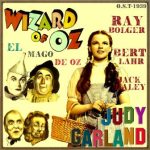 The Wizard of Oz (O.S.T - 1939)
The Wizard of Oz (O.S.T - 1939)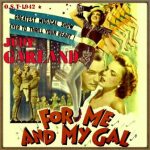 For Me and My Gal (O.S.T - 1942)
For Me and My Gal (O.S.T - 1942)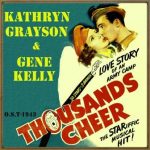 Thousands Cheer (O.S.T - 1943)
Thousands Cheer (O.S.T - 1943)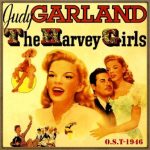 The Harvey Girls (O.S.T - 1946)
The Harvey Girls (O.S.T - 1946)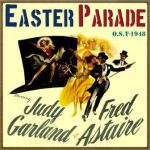 Easter Parade (O.S.T - 1948)
Easter Parade (O.S.T - 1948)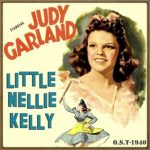 Little Nellie Kelly (O.S.T - 1940)
Little Nellie Kelly (O.S.T - 1940)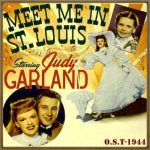 Meet Me in St. Louis (O.S.T - 1944)
Meet Me in St. Louis (O.S.T - 1944)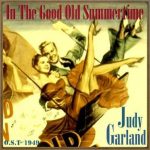 In the Good Old Summertime (O.S.T - 1949)
In the Good Old Summertime (O.S.T - 1949) Original Soundtracks Hollywood 40's
Original Soundtracks Hollywood 40's Vintage Hollywood
Vintage Hollywood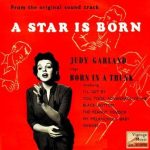 Born In A Trunk, Judy Garland
Born In A Trunk, Judy Garland 100 Vintage Love Songs
100 Vintage Love Songs Words and Music (O.S.T - 1948)
Words and Music (O.S.T - 1948)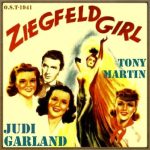 Ziegfeld Girls (O.S.T - 1941), Varios Artistas
Ziegfeld Girls (O.S.T - 1941), Varios Artistas 100 Songs for Romantic Dinner
100 Songs for Romantic Dinner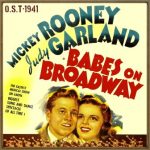 Babes On Broadway (O.S.T - 1941)
Babes On Broadway (O.S.T - 1941) Songs For Vintage Lovers
Songs For Vintage Lovers 100 Original Soundtracks, Hollywood Vol. 1
100 Original Soundtracks, Hollywood Vol. 1 100 Original Soundtracks, Hollywood Vol. 2
100 Original Soundtracks, Hollywood Vol. 2 50 Radio Hits of the 50's
50 Radio Hits of the 50's Las Edades de la Navidad, The Christmas Ages
Las Edades de la Navidad, The Christmas Ages 50 Soundtracks Movies of 50'
50 Soundtracks Movies of 50'



